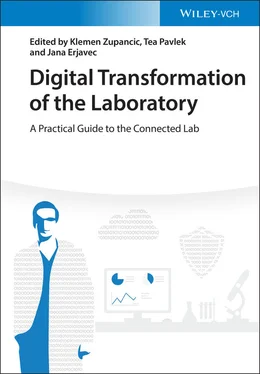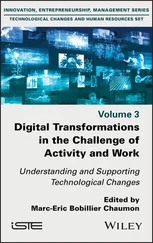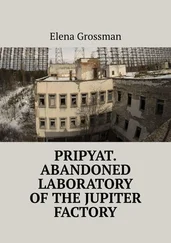Finally, an area of growing interest, which could be considered the antithesis of antimicrobial research, is that of the microbiome [99]. There is increasing recognition that the commensal bacteria and other microbes which live symbiotically in and on our bodies (mainly mucous membranes in, for example the gut and also on the skin) can play a major role in our acquisition, presentation, and the severity of certain diseases (e.g. irritable bowel syndrome, Crohn's disease, and psoriasis). Research into an individual's microbiome and treatments based on “normalization” of a person's inherent flora will grow and become more mainstream over the next few decades [100].
1.2.6.2 New Science in the Life Sciences Domain
As discussed in several of the earlier parts of this section, there is one critical, global driver which will dominate new science and how it is performed in the LotF; that key driver is climate change and the supporting concept of “sustainability”. There will be new research looking specifically into climate change and sustainability as areas of interest in themselves, but the need for the LotF, both the hypothesis‐ and the protocol‐driven lab, to be more sustainable, less dependent on oil and oil‐based products, and yet be more efficient, will become paramount in the decades to come. Labs that do “chemistry” will be a primary focus for these developments, but biology‐focused labs will not be immune. The pressure to be more environmentally friendly, using fewer reagents and disposable materials, will lead to new research to discover, for example effective replacements for all the lab plastics currently used; greener chemistry (use of less‐toxic solvents and reagents); greater use of catalysts; and more use of biological systems to perform complex chemical transformations. None of these examples are exactly new, but their importance and greater use in the LotF will be significant.
Just as the next generation of scientists is exquisitely conscious of the environment, so too is it particularly focused on animal welfare. The ever‐growing drive toward minimization of the use of animals in research and product testing, while it can never in truth be completely eliminated, will continue to accelerate. Initiatives such as the “3Rs” [101] looking to replace, reduce, and refine the use of animals in the lab will gain more traction [102]. In vitro approaches to meet the goals of the 3Rs will include developments such as organ‐on‐a‐chip [103] and the increasing use of stem cells. These new methods will become widespread in the LotF.
Finally, there is one lab technique, which has been a mainstay of the lab for hundreds of years, yet is still undergoing significant evolution and is likely to feature significantly in the LotF: microscopy. Advances in traditional imaging revolutionized life sciences over a decade ago, but current developments in microscopy are likely to transform utterly how in the future we perceive “things” both at the molecular and macromolecular levels. There are two specific examples, which we feel are worth mentioning here: firstly, the scanning tunneling microscope (STM) [104] and secondly, the cryo‐electron microscope (cryo‐EM) [105]. STM and other comparable new microscopy techniques [106] have the potential to take to an even higher level our ability to study cells, solid‐state materials, and many other surfaces. STM has clear potential applications in biology, chemistry, surface science, and solid‐state physics [107]. The STM, which operates through the principles of quantum tunneling, utilizes the wavelike properties of electrons, allowing them to “tunnel” beyond the surface of a solid into regions of space that are normally forbidden under the rules of classical physics. While the use of STM has been focused mainly on physicochemical and solid‐state challenges, increasingly scientists are looking at STM as a means to see more deeply into chemical and biochemical systems, right down to the atomic level [108]. Cryo‐EM is the electron microscopic imaging of rapidly frozen molecules and crystals in solution. It demonstrates its main benefits at the macromolecular level, enabling scientists to see the fine structures of proteins, nucleic acids, and other biomolecules, and even to study how they move and change as they perform their functions, but without having to use the intense electron beams and high vacuum conditions used in traditional electron microscopy [109].
1.2.6.3 Other Important New Science Areas
We have asserted throughout this section that the driver of climate change and the push to greater sustainability will dramatically affect how the LotF will look, and what will take place within it. In a final piece of speculation on what new science will be taking place in these future labs, we suggest two research areas, which we believe will occupy a great deal of time and effort in labs over the next 10–20 years. These two areas are carbon (actually carbon dioxide) fixing and sequestration [110], and R&D around new battery technology, particularly new technologies which avoid the use of heavy metals [111]. The scientists working in or near the LotFs will do a great disservice to their descendants and to the planet if they do not research these critical areas.
1.3 Thoughts on LotF Implementation
The lab environment is changing – this is certain. New and existing science demands combined with critical issues of data management and reproducibility will require a strategic direction to be set and then deployed. It will be important for lab managers to identify what they want to achieve by employing the new approaches of AI, quantum computing, and advanced automation technology. Business ambition and needs, and the assessment of the maturity of organizations beyond the lab environment in the context of initiatives such as FAIR data, will need to be investigated as a matter of urgency to help drive lab of the future decision‐making. With such a pace of change it will be important to “think big” as well as be practical during implementation. Thinking in expansive terms, organizations must consider all the opportunities on offer within the key areas of technology, data, people, and process to highlight possible future visions and ways of working. They should use scenario planning to explore, influence, plan for, and manage the future. These scenarios will perhaps be most effective when they are personalized to the organization, function, lab, or team's future, rather than to a generic vision. The benefit of running pilots prior to fuller implementation in the LotF cannot be overstated. Small LotF pilots will allow experimentation across the broad themes. These will reveal what works and what needs adjustment based on the key lab environments. The successful use cases can result in new designs, collaborations, future partnering with technology groups, and new predictive models to support experiments in a timely manner. Moving beyond these smaller pilots and the learnings from them will help catalyze organizational change to support a lab environment that can adapt to new science and get the most from data, digital technology, and AI‐driven transformations. All these changes will present new business opportunities, the chance for new relationships with vendors, and the need for new business partners. They will also present opportunities for all lab colleagues to take part in the transformation and to take on new roles and skills to support the implementation and future impact.
In this section we have endeavored to show how the LotF will potentially evolve, using five main areas as a focus for those possible changes and developments: (i) the people and organizational culture aspects; (ii) the process components; (iii) the LotF environment and design; (iv) the data management challenges; and (v) the new technologies and the new science which will take place in those LotFs. In this concluding section, we would like to pick out just a few key messages from each of these areas to highlight the promise and the challenge that “LotF” presents.
Читать дальше











